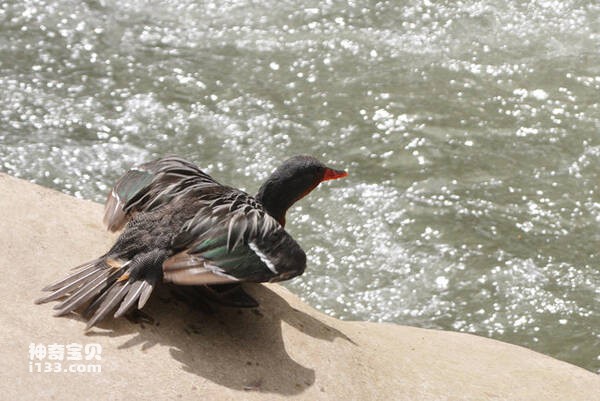Merganetta armata
IUCN
LCBasic Information
Scientific classification
- name:Merganetta armata
- Scientific Name:Merganetta armata,Torrent Duck
- Outline:Waterfowl
- Family:
Vital signs
- length:43-45CM
- Weight:330-440g
- lifetime:No textual research information is available
Feature
Male ducks often have intricate black and white stripes on their heads
Distribution and Habitat
It is distributed along the Andes Mountains of South America, including Colombia, Venezuela, Ecuador, Peru, Bolivia, Argentina, and Chile.
Frequent the rapids of the Andes, on the exposed rocks and water between rapids and waterfalls. The usual height is 1,500 to 3,500 meters above sea level, but in Chile and Bolivia it can be as high as 4,500 meters.
Appearance
The turbulent duck is 43-45 cm long and weighs 330-440 grams. The plumage varies not only by sex, but also by geographical distribution of the six subspecies. Male ducks often have intricate black and white stripes on their heads. In contrast to the black eyes and white eyebrows, a black V-shaped stripe is inserted in the middle of the forehead up to the neck, where a black eye stripe is added on each side. The rest of the head and neck are white. The chest and wings are in varying shades of dark brown and taupe stripes, while the belly is dark gray. The back and shoulder feathers are characteristic: sharp, slender, with brown accents in black and white trim. Above the back, rump and tail are fine gray and black spots. The tail feathers are long grey-brown. There are green wing mirrors. Primary feathers black brown gray.
The biggest difference in female ducks is the head, crown, cheeks and neck, which are almost all grey from the neck up, with very fine webbed markings. The shoulder
Details
The Torrent Duck (Merganetta armata) has six subspecies.

Both sexes whistled shrill. Male ducks make similar noises when flying over water. Witi' Or repeat or stop, and the amount of sound is enough to drown out the sound of turbulent water. And the female duck sounded like weeping. quiick' It is more like a guttural sound, and its range of transmission is smaller.

The mate of the turbulent duck is relatively stable and durable. The breeding season varies greatly depending on the subspecies. The breeding season is long at the equator, from July to November; Breeding in Peru occurs during the dry season, usually in July and August; In Chile, in the southern hemisphere, turbulent ducks nest at low elevations and breed in the spring, in November. The female ducks build nests on the banks of rivers, hidden in the dense vegetation of stones and roots, or in tree holes or even in old kingfisher holes. Each nest usually contains 3 or 4 eggs. Incubation time is 43 or 44 days. Once hatched, the black and white ducklings follow their mother ducks back on a dangerous journey into the fast-flowing river. The duckling has remarkable endurance but little experience, and is also capable of climbing rocks.
Listed on the International Union for Conservation of Nature (IUCN) 2012 Red List of Threatened Species ver3.1 - Low Risk (LC).
Protect wild animals and eliminate wild meat.
Maintaining ecological balance is everyone's responsibility!








